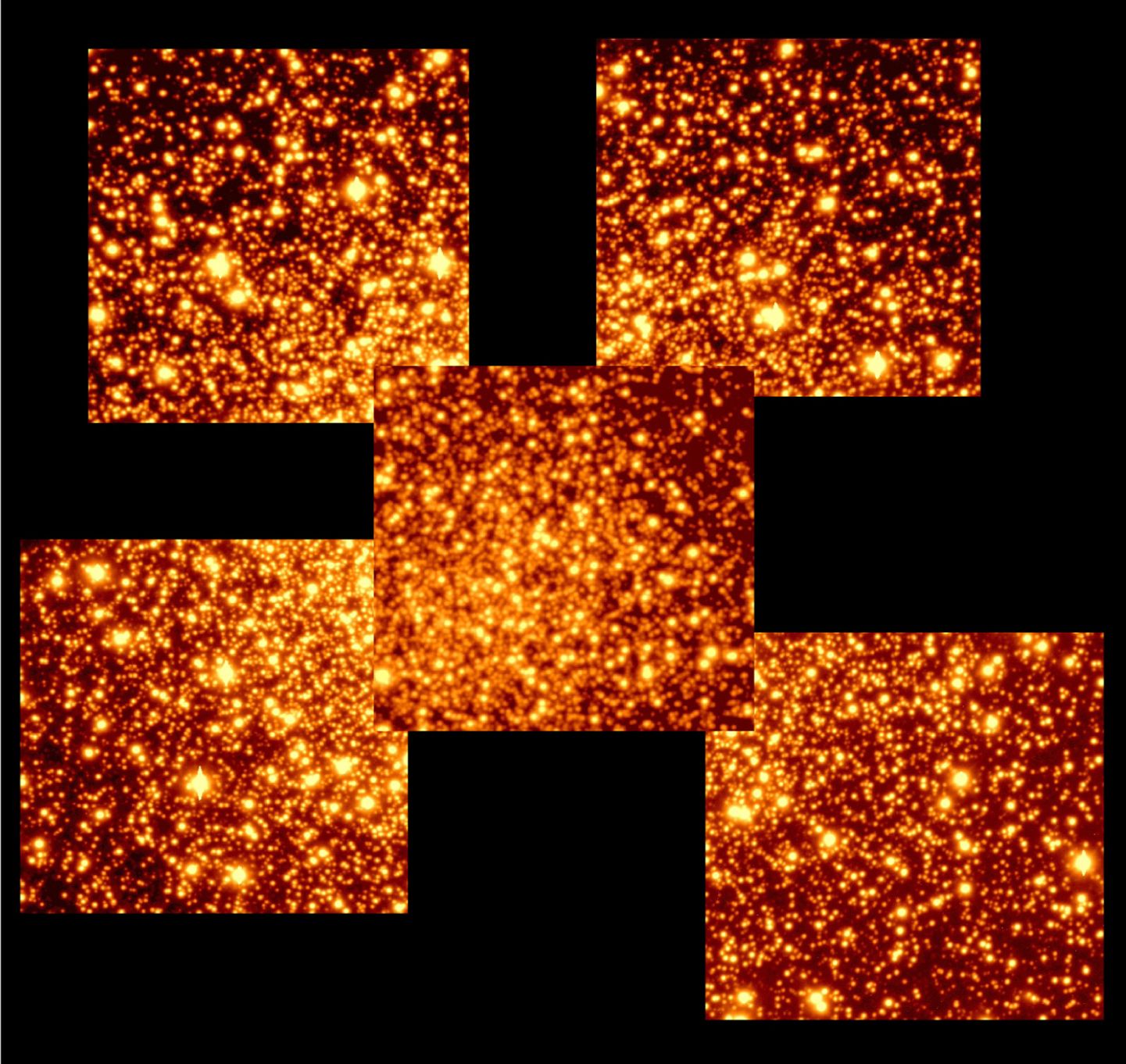how big is a globular cluster?
There are many ways to measure the size of a globular cluster, both observationally and theoretically.
This causes some confusion, especially when theorists try to talk to observers, or vica versa.
rc - the core radius
there are at least three definitions of this:
1) the observer definition is that this is the radius at which the surface brightness has dropped to half its central value; this assumes the surface brightness is flat at small radii and the core is resolved, otherwise the central surface brightness is underestimated by the convolution of the point spread function.
2) theorists have two definitions - the "King radius" which is the radius of the "core" in the truncated isothermal single component model for clusters due to Ivan King; it is generally close to the observed core radius, for clusters with low concentration and not much mass segregation, and therefore a mass-to-light ratio close to constant; or you can define a more general quantity which is the half surface density radius, which ought to mass the observers' definition, if the mass-to-light ratio assigned to stellar populations is correct.
a lot of subtleties arise if there is a multi-mass population with high mass contrasts;
someone ought to sit down sometime and systematically illustrate this, but it is rather tiresome to do so although it might be very useful for many people to have at hand.
Volunteers? I'd lend you my mmKing code...
since the "concentration" of a cluster is c = log(rt/rc), it is important to get rc right, or at least consistent.
rh - the "half-mass" radius is the most robust of the quantities.
What is measured is of course the half-light radius, which is the same thing if the mass-to-light ratio is constant; and may be consistent since the mean mass-to-light ratio has a tendency to be comparable to the mass-to-light ratio at the half-mass radius.
Historically, it has been hard to measure the light profile at radii much larger than rh so the internal light is well measured, but the outer light extrapolated, assuming a King profile... but with wide-field CCD imagers "we" can now measure light profiles all the way to the cluster edge where the stellar density drop to the mean stellar density in the galactic field at the location of the cluster.
It would be interesting to systematically compare actual measured cluster profiles with those derived using only the light inside rh
rt the "tidal" radius is the radius at which a truncated isothermal cluster ought to be tidally truncated in a idealised "spherically averaged" constant tidal field.
It is best thought of as a fitting parameter for the King models, where the cluster density theoretically drops to zero.

rJ the Jacoby radius, which is not constant in time or angle, is the distance of the Jacoby surface from the cluster center - being the surface of "zero force" between the gravitational force of the cluster and the galactic gravitational field - essentially the radius of the Roche surface
We can numerically model this and get some "averaged tidal radius", except we don't know the galactic gravitational field very well - (eg recent result claiming the galactic rotation velocity is off by 15%!) and we know the orbits of most globular clusters about the galaxy very poorly
It would be amusing and interesting to run full N-body models of many different King model clusters in a galactic potential and explore systematically the shape of the outer regions as function of cluster parameters, orbit about galaxy and cluster content (eg does it have a IMBH) - with relaxtion of course
Sort of like what we did in Johnston, Sigurdsson and Hernquist, but using Moore's Law gains to do a lot of models for long time.
The code - V-SCF - O(N) N-body with FP relaxation scheme is tanned, rested and ready to run.
Volunteers?


